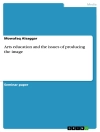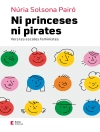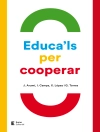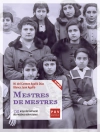This book examines the theoretical basis of one of the functional layers—the message layer—of an architectural theory of instructional design. The architectural theory (Gibbons, 2003; Gibbons & Rogers, 2009; Gibbons, 2014) identifies seven functions carried out during instruction that correspond with designable strata, or layers.
The architectural theory proposes that for each layer there exists a specialized body of design languages, constructs, questions, tools, practices, processes, a professional community, and most especially, bodies of design theory. It also proposes that design knowledge from other design fields, many of which approach design from the same functional perspective, can be appropriated for the further development of knowledge within the instructional technology field.
A robust literature from disparate fields supplies relevant theory for message layer design. This book builds the case for validationof the message layer by bringing together work from instructional theory, conversation theory, research in the learning sciences, intelligent tutoring system research, and K-12 education. Within this literature, the authors demonstrate the existence of the message as a structural abstraction: an independently designable entity. They trace the development of the message construct historically, showing that it has remained remarkably stable over time, independent of changing psychological, educational, and technological conventions.
Содержание
Chapter 1 – Instruction as a Conversation: The Imperative for Message Layer Design.- Chapter 2 – Conversation Theory and the Message Construct.- Chapter 3 –Message Structure, Educational Psychology, and Instructional Technology.- Chapter 4 –Message Structure and Intelligent Tutoring Systems.- Chapter 5 – Message Structure, the Learning Sciences, and Social Learning Theory.- Chapter 6 – Results and Conclusion.
Об авторе
Dr. Andrew S. Gibbons conducts research on the architecture of instructional designs. His book,
An Architectural Approach to Instructional Design (Routledge, 2014), expresses a theory of instructional design layers, design languages, and modularity to aid the creation of more conversational, innovative, and interactive forms of instruction. Gibbons has also published a content domain theory of Model-Centered Instruction. His goal is to explore the use of layers, languages, and modularity as tools for creating instructional systems that are adaptive, generative, and scalable.
Elizabeth Boling is professor of instructional systems technology in the School of Education at Indiana University. Prior experience includes 10 years in design practice, five with Apple Computer, Inc. She has served as department chair, associate dean for graduate studies, and interim executive associate dean for the School of Education, Indiana University. Her research interests includevisual design for information and instruction, and design theory, pedagogy and practice. She is past editor-in-chief of Tech Trends, founding editor and current editor-in-chief of International Journal of Designs for Learning, lead editor the Routledge title
Studio Teaching in Higher Education: Selected Design Cases and a co-editor of the forthcoming
Handbook of Research in Educational Communications and Technology, 5th Edition.












